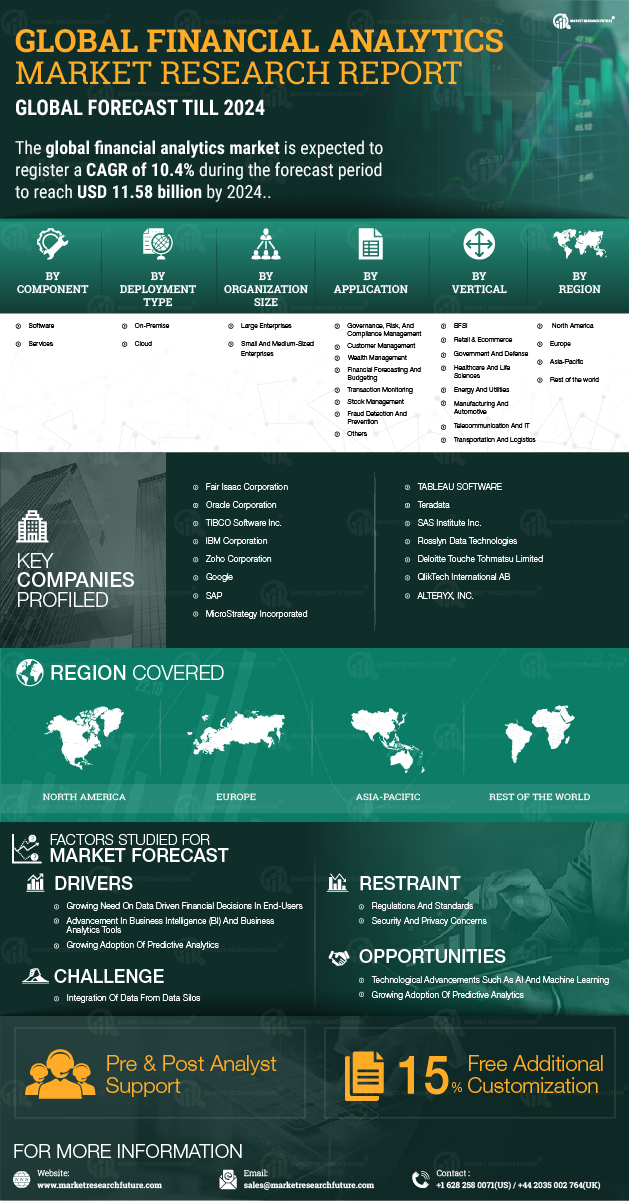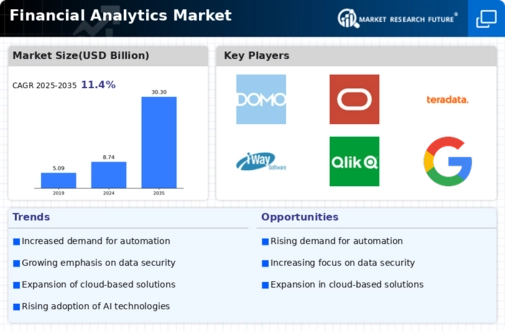The Financial Analytics Market is currently characterized by a dynamic competitive landscape, driven by the increasing demand for data-driven decision-making and the integration of advanced technologies. Key players such as IBM (US), Oracle (US), and SAP (DE) are strategically positioned to leverage their extensive portfolios and technological capabilities. IBM (US) focuses on innovation through its AI-driven analytics solutions, while Oracle (US) emphasizes cloud-based offerings to enhance operational efficiency. SAP (DE) is concentrating on regional expansion, particularly in emerging markets, to capture new customer segments. Collectively, these strategies contribute to a moderately fragmented market structure, where competition is intensifying as companies seek to differentiate themselves through technological advancements and customer-centric solutions.
In terms of business tactics, companies are increasingly localizing their operations and optimizing supply chains to enhance responsiveness to market demands. The competitive structure of the Financial Analytics Market appears to be moderately fragmented, with several key players exerting substantial influence. This fragmentation allows for a diverse range of offerings, yet the presence of major players like Microsoft (US) and SAS (US) ensures that competition remains fierce, particularly in the areas of innovation and service delivery.
In November 2025, Microsoft (US) announced a strategic partnership with a leading fintech firm to enhance its financial analytics capabilities. This collaboration aims to integrate advanced machine learning algorithms into Microsoft’s existing analytics platform, thereby providing clients with more accurate forecasting and risk assessment tools. The significance of this partnership lies in its potential to position Microsoft as a frontrunner in the financial analytics space, particularly as businesses increasingly seek sophisticated solutions to navigate complex financial landscapes.
In October 2025, SAP (DE) launched a new suite of financial analytics tools designed specifically for small and medium-sized enterprises (SMEs). This initiative reflects SAP's commitment to democratizing access to advanced analytics, enabling SMEs to leverage data insights for strategic decision-making. The introduction of these tools is likely to enhance SAP's market share among SMEs, a segment that has been historically underserved in terms of financial analytics solutions.
In December 2025, SAS (US) unveiled a new AI-driven analytics platform aimed at enhancing real-time financial reporting and compliance. This platform is designed to streamline data integration from various sources, thereby providing organizations with a comprehensive view of their financial health. The launch of this platform underscores SAS's focus on innovation and its commitment to meeting the evolving needs of financial professionals in an increasingly complex regulatory environment.
As of December 2025, the Financial Analytics Market is witnessing a pronounced shift towards digitalization, sustainability, and AI integration. Strategic alliances among key players are shaping the competitive landscape, fostering innovation and enhancing service offerings. The evolution of competition appears to be moving away from traditional price-based strategies towards a focus on technological differentiation and supply chain reliability. This trend suggests that companies that prioritize innovation and customer-centric solutions are likely to gain a competitive edge in the future.

















Leave a Comment